Natural rock retaining walls transform landscapes into visually captivating, functional spaces that harmonize with nature's beauty. Imagine your yard bordered by rugged boulders or gently curved flagstones, each rock carrying a unique texture and history that enhances the organic feel of the garden. These 15 splendid natural rock retaining wall ideas introduce styles that can elevate any outdoor setting, from earthy limestone terraces to pebble-lined Zen spaces. With the right rock choice, your retaining wall can evolve from a simple structure to a feature that's as robust as it is beautiful, balancing aesthetics and functionality.
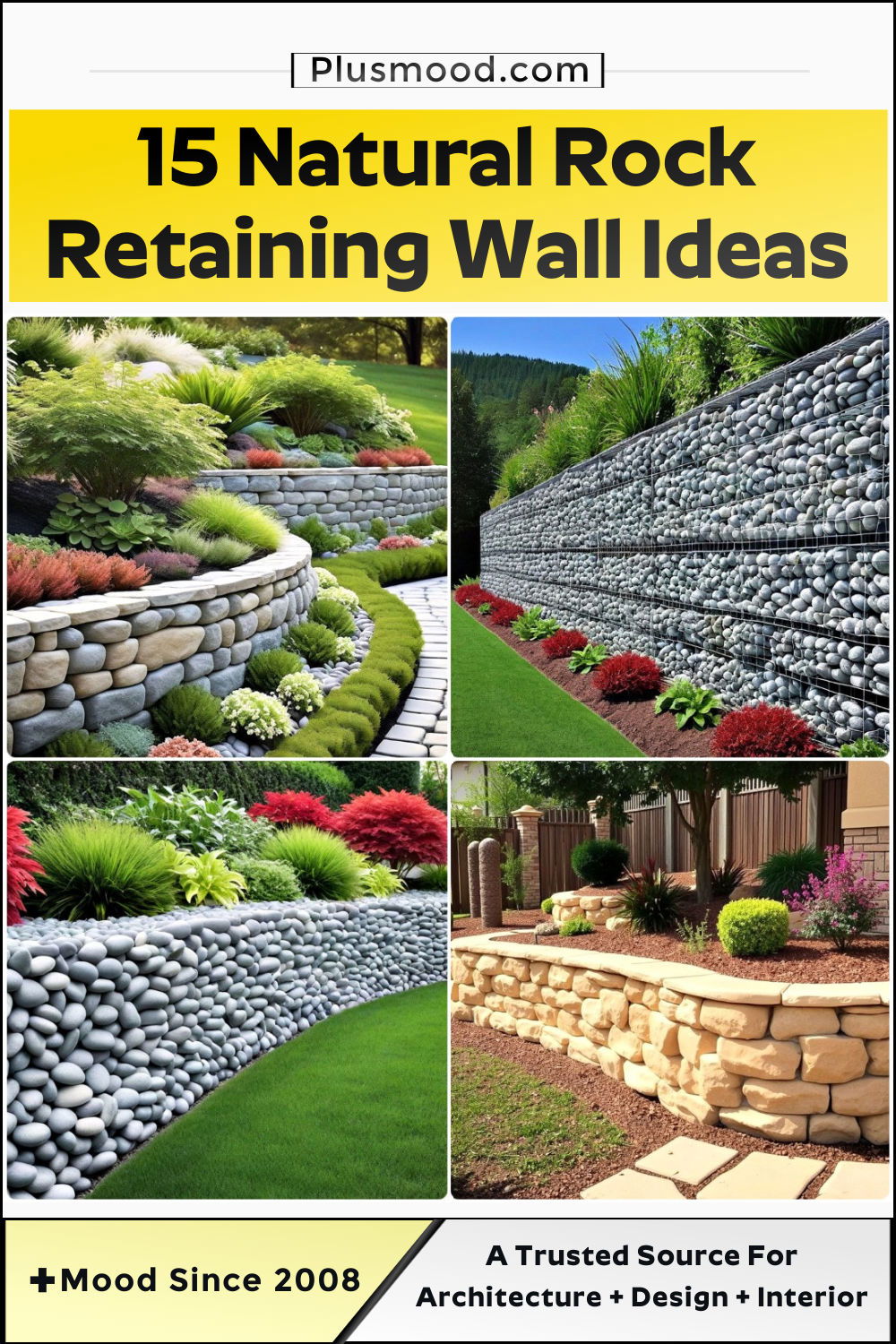
1. Rustic Dry-Stacked Wall
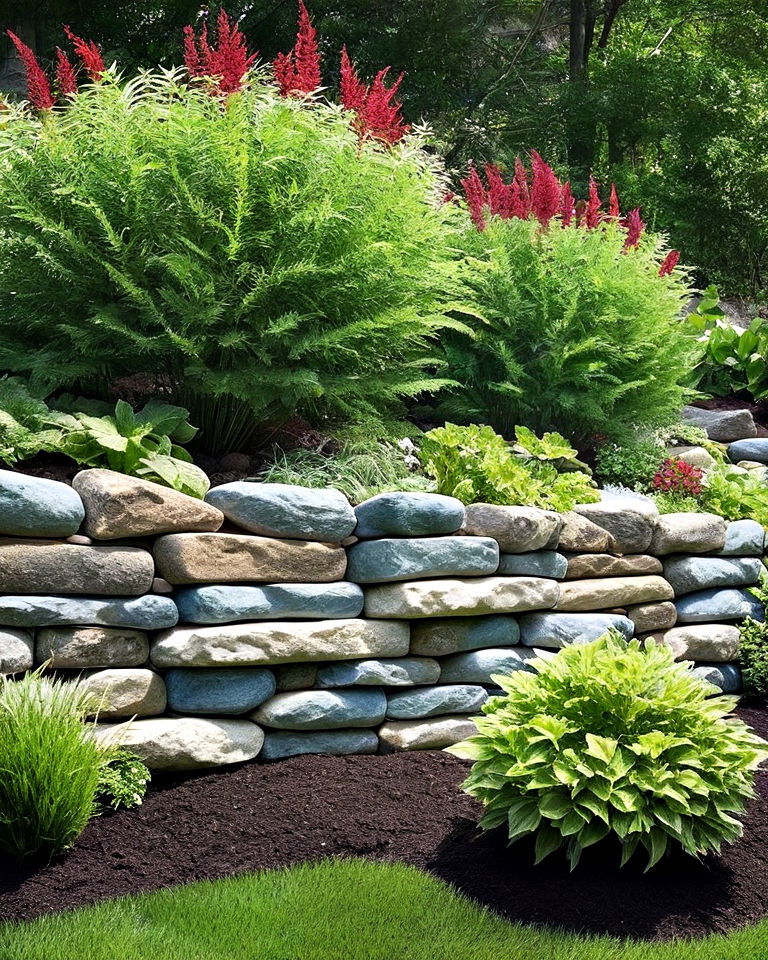
Dry-stacked rock walls give a natural, rustic charm without the need for mortar. These walls are highly flexible, adapting to uneven ground and slight shifts, making them ideal for garden beds or sloped yards. Using locally sourced stones adds authenticity while helping the wall blend seamlessly with the surrounding landscape. With varied stone sizes, a dry-stacked wall can serve as both a retaining structure and an eye-catching feature in your yard.
2. Boulder Retaining Wall

Large boulders offer strength and a bold aesthetic that suits rugged landscapes. They provide excellent support on steep slopes and create a natural, imposing look that's perfect for expansive yards or wooded areas. Boulders also reduce soil erosion and support plant growth within their crevices, adding to the environment's biodiversity. Choosing irregular boulders creates a unique texture, making the wall stand out while reinforcing the earth.
3. Flagstone Terraced Wall

Discover unique natural rock retaining wall ideas to add rustic charm and functionality to your landscape. For a structured yet natural look, consider flagstone terraces. These walls are built in layers with flat stones, creating a stair-step effect that works well for terraced gardens. Flagstone's uniform shape allows for clean lines, ideal for contemporary landscapes or gardens with multiple planting zones. Each terrace provides an opportunity to add different plant types, creating a layered effect that adds depth and interest to your yard.
4. Limestone Block Wall
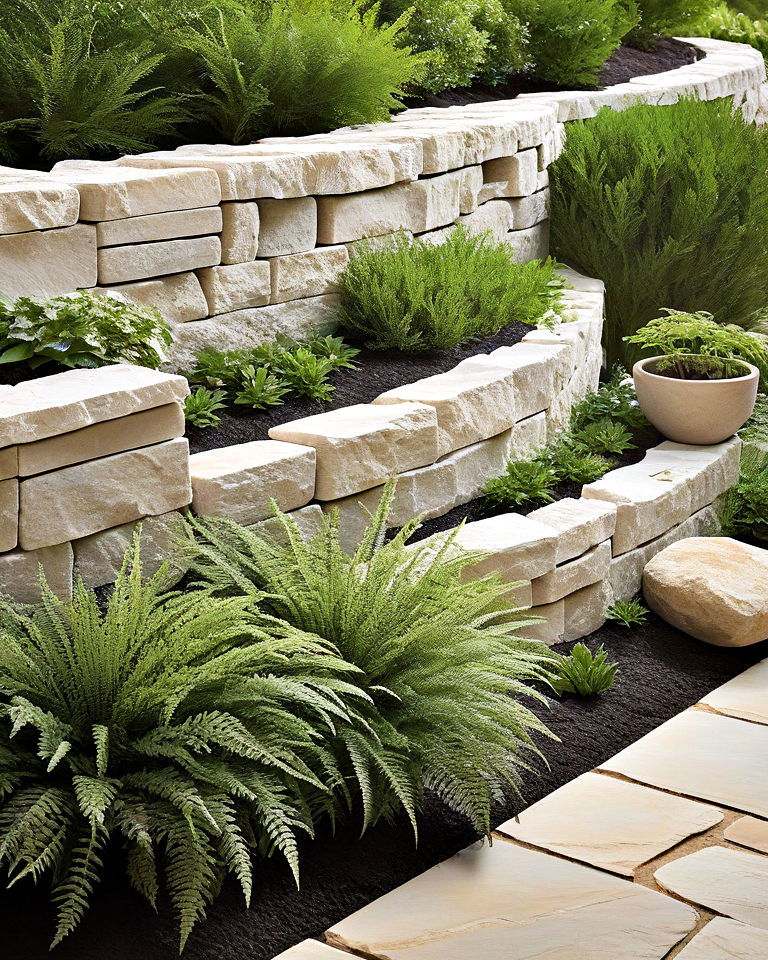
Limestone's subtle hues and smooth texture bring a refined touch to any outdoor space. Limestone blocks, typically rectangular, stack easily and create a sturdy, long-lasting wall that works well for flat or gently sloping terrain. This stone's density and durability make it resistant to the elements, and its neutral color complements both greenery and water features, blending seamlessly into the natural setting.
5. Mixed Stone Mosaic Wall

Mixing stones of varying shapes, colors, and textures in a mosaic pattern gives a visually appealing, artistic look. This approach is perfect for homeowners wanting a unique, customized wall that showcases local rock varieties. The mix of stones not only strengthens the wall but also creates a natural aesthetic. Incorporate different colors and textures to add depth and dimension, making this wall a standout feature in your landscape.
6. Sandstone Retaining Wall
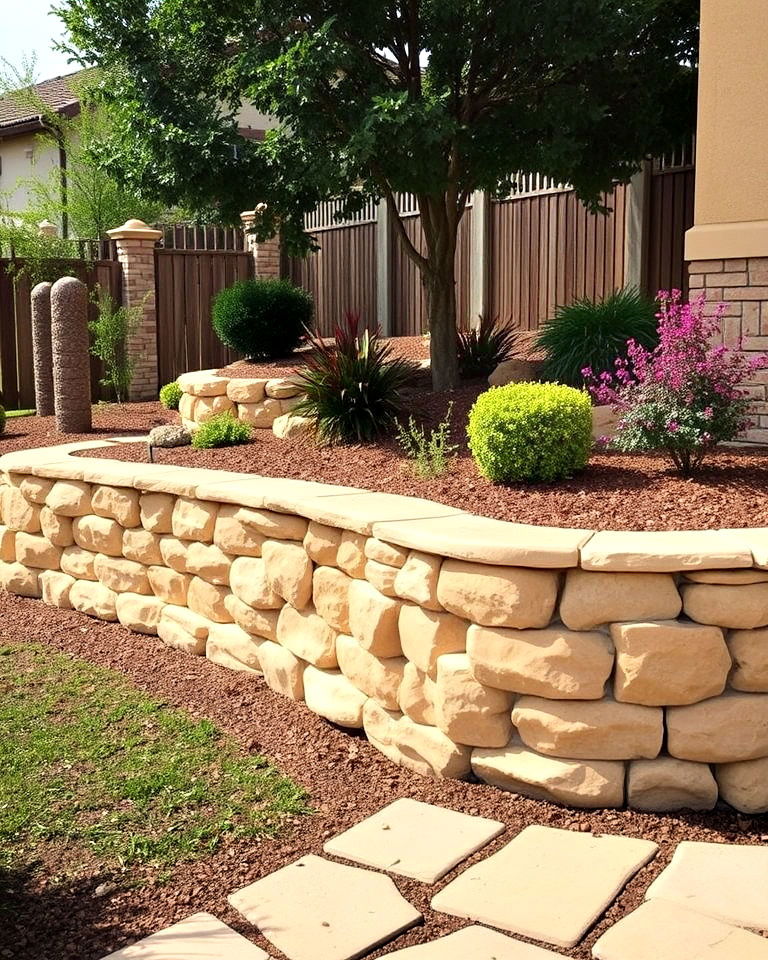
Sandstone's warm, earthy tones bring a welcoming feel to outdoor spaces. Perfect for Mediterranean or desert-inspired gardens, sandstone weathers beautifully, developing character over time. Its porous nature allows it to support natural moss or lichen growth, enhancing its integration with the environment. This wall style is especially suitable for gentle slopes and can easily double as a seating area in your yard.
7. Cobblestone Wall with Planters
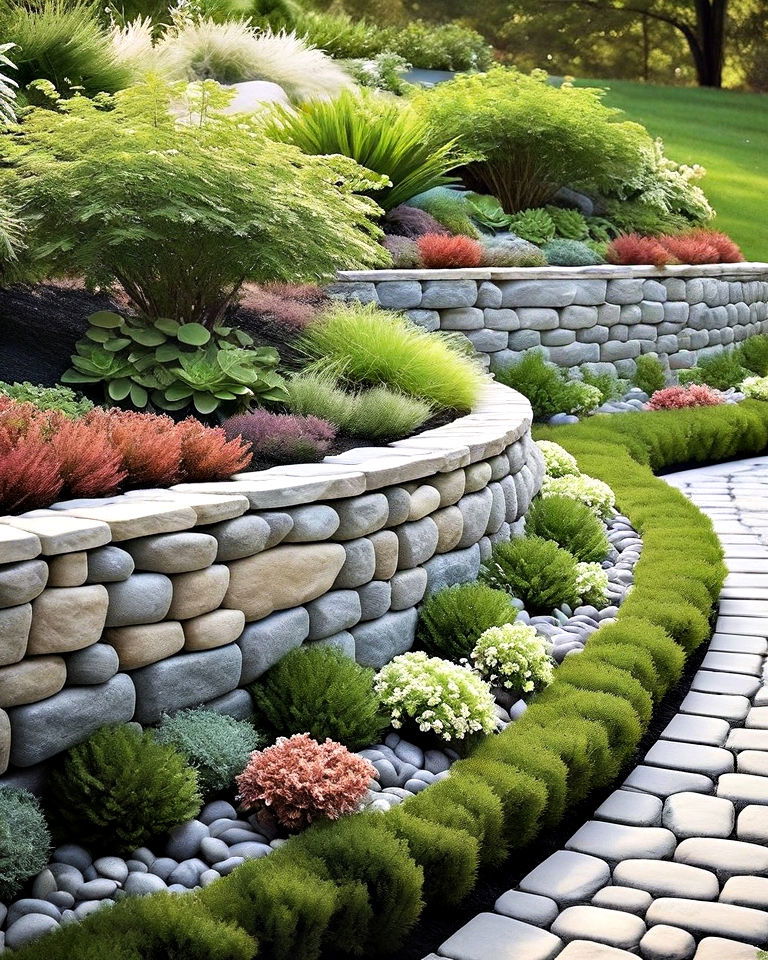
Integrate cobblestones with built-in planters to create a retaining wall that doubles as a vertical garden. The rounded cobblestones give a softer look than sharp-edged rocks, while the integrated planters allow for flowering plants or succulents. This design maximizes space, especially in smaller gardens, and adds color and greenery directly into the wall. The cobblestone texture creates a timeless look, making it ideal for cottage or woodland-style landscapes.
8. River Rock Wall with Water Feature

Get inspired with creative rock wall ideas that blend beauty and durability for any outdoor space. A river rock wall paired with a garden pond or waterfall creates a tranquil atmosphere. River rocks' smooth, rounded surfaces complement flowing water, making this setup ideal for a garden pond or waterfall. The natural water flow over the stones enhances their color and brings out their texture, adding a dynamic element to the landscape. This type of wall is excellent for level ground or gentle slopes and can provide a peaceful, relaxing focal point.
9. Slate Rock Wall

Slate's fine texture and dark tones give a sleek, modern appeal to outdoor spaces. This rock is ideal for walls where you want a more polished look without losing the natural feel. Slate's uniform thickness allows for easy stacking, and its weather resistance makes it a low-maintenance choice. The rich, dark color of slate contrasts beautifully with lush green plants, making it the perfect choice for minimalist or contemporary landscapes.
10. Gabion Stone Retaining Wall
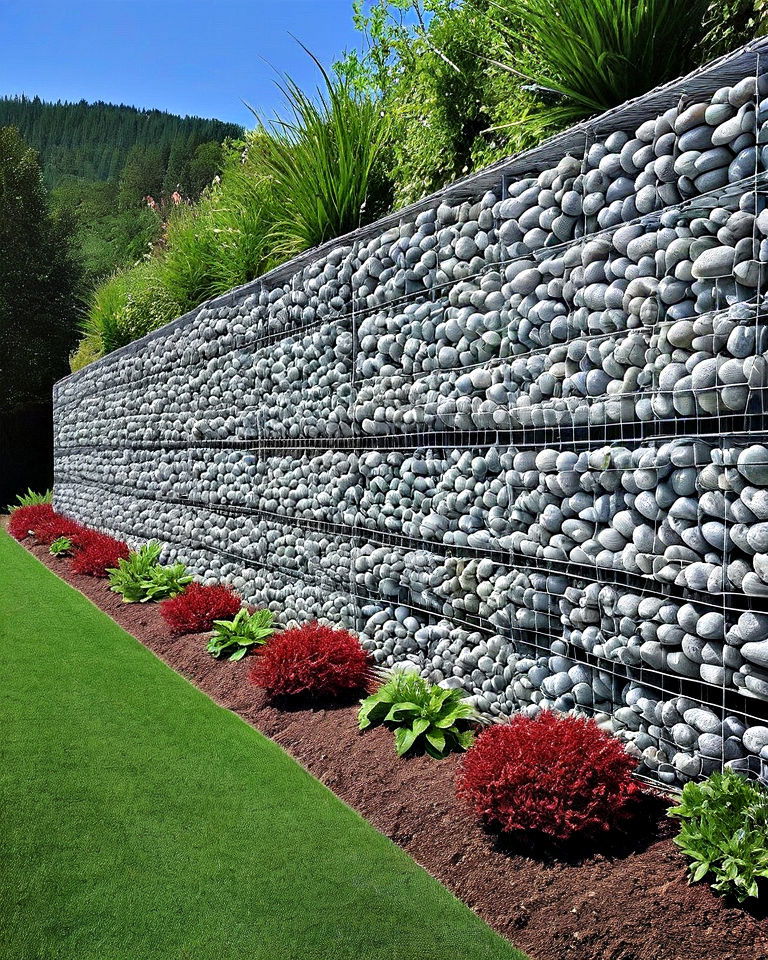
Gabion walls use wire cages filled with stones to create a sturdy and stylish retaining wall. This method allows for excellent drainage, making it a great solution for areas with heavy rainfall or soil erosion issues. The wire framework can be filled with a variety of stones, giving a custom look to each wall. Gabion walls fit well in modern or industrial-themed gardens and offer a practical solution to steep slopes or erosion-prone areas.
11. Reclaimed Stone Wall
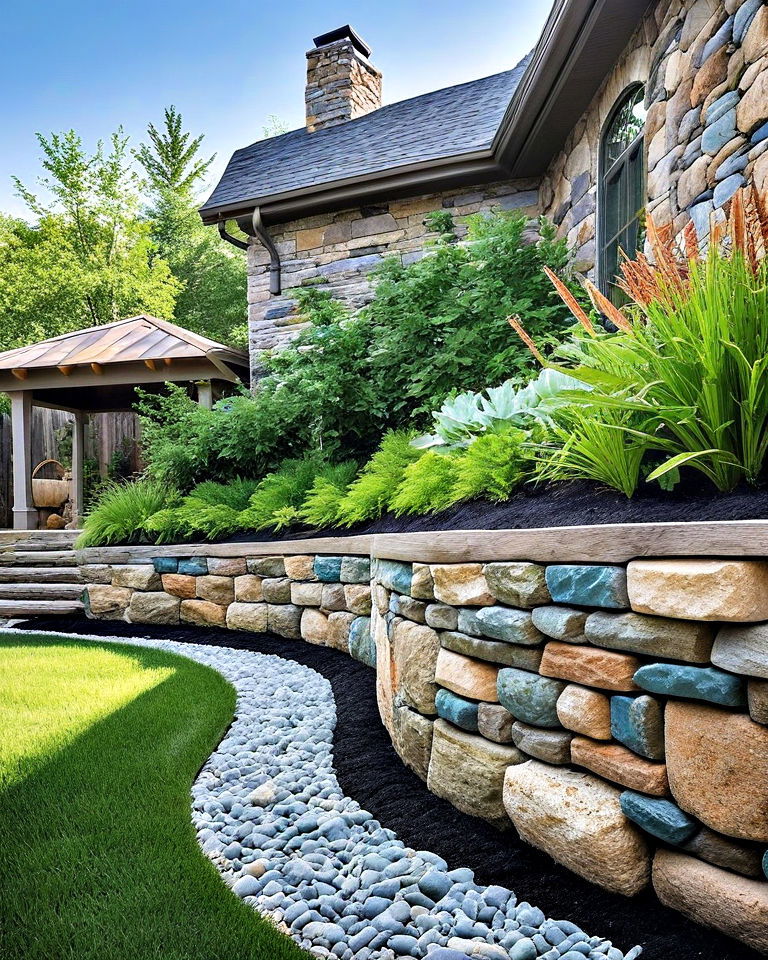
Using reclaimed stones adds a sense of history and character to your retaining wall. Reclaimed stones come in unique shapes and colors, often weathered by time, adding an aged look that blends seamlessly with natural surroundings. This sustainable option also reduces environmental impact and gives a personal touch, making each wall unique. Ideal for vintage or eco-conscious gardens, a reclaimed stone wall merges sustainability with charm.
12. Basalt Retaining Wall
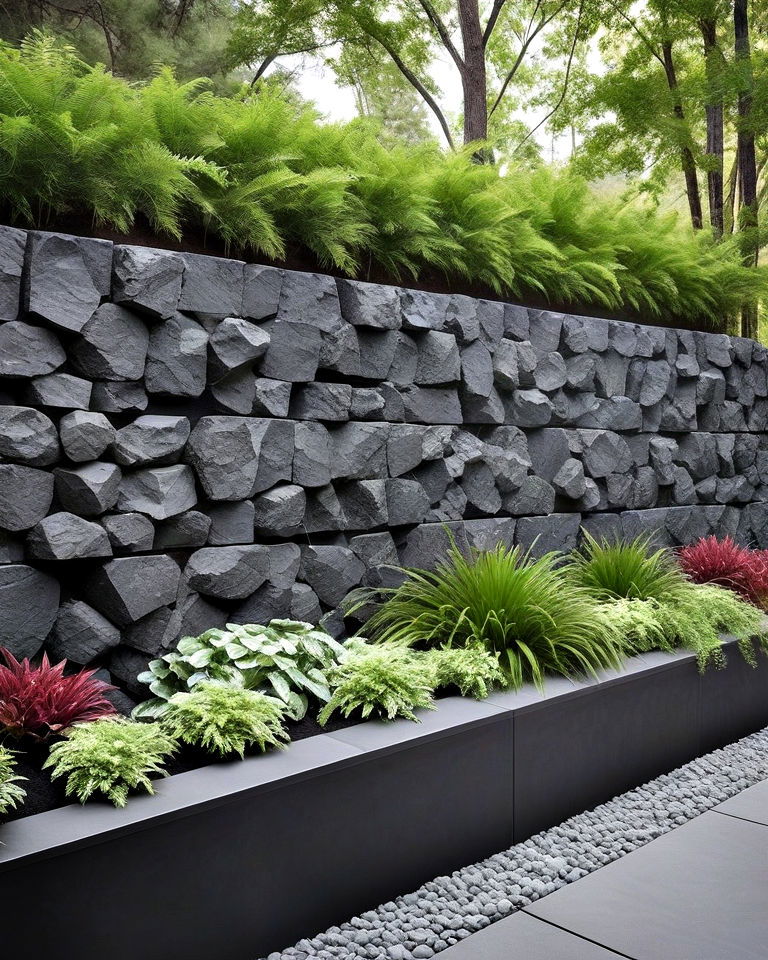
Basalt's striking dark color and dense composition make it a strong and sophisticated choice for retaining walls. Its modern, refined look pairs well with both greenery and minimalist designs. The stone's density ensures longevity and weather resistance, making it a low-maintenance option. Basalt walls are great for contrasting with light-colored plants and flowers, providing a dramatic backdrop that brings depth to your landscape.
13. Moss-Covered Rock Wall
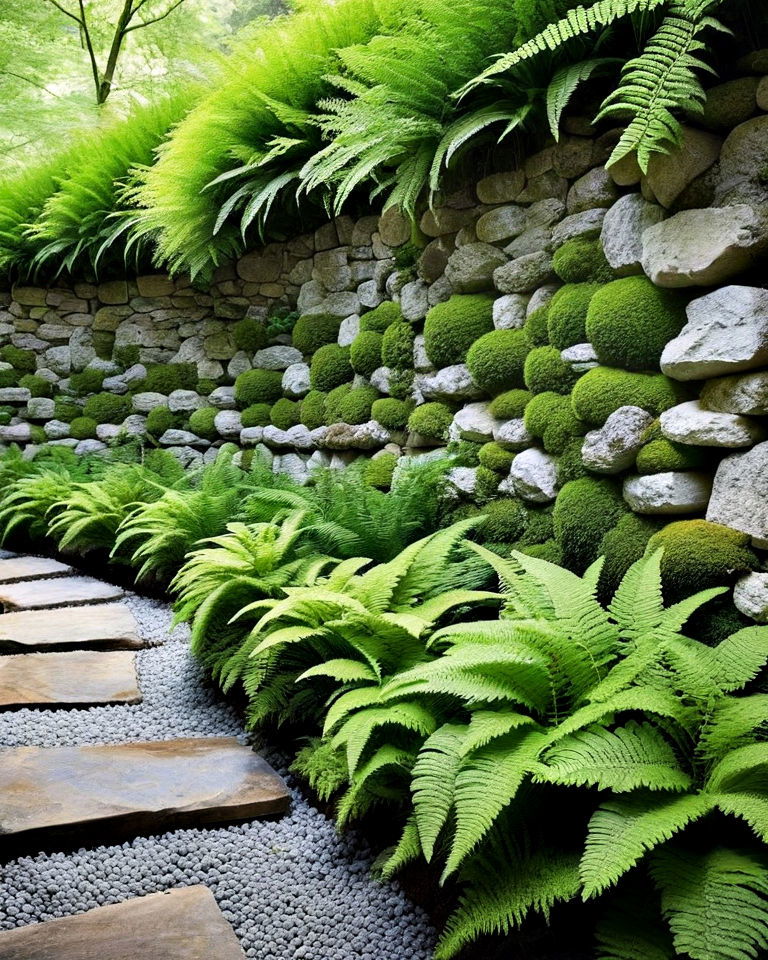
For a wall that seamlessly integrates into a lush, natural setting, consider encouraging moss growth on your stones. A moss-covered rock wall evokes an enchanted, woodland feel that's ideal for shaded gardens. Moss helps retain moisture and cools the surrounding area, benefiting nearby plants. This type of wall complements ferns, wildflowers, and other shade-loving plants, transforming your garden into a serene, green oasis.
14. Fieldstone Retaining Wall
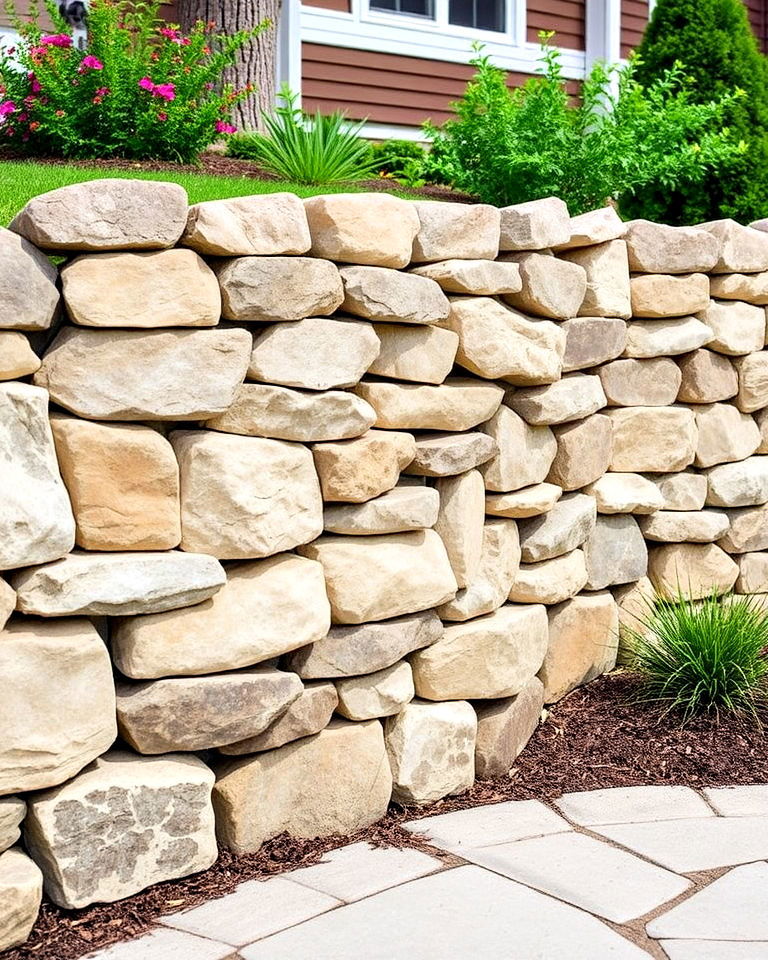
Explore timeless natural stone retaining wall ideas for a sturdy, elegant garden or yard design. Fieldstone's rough, irregular shape and variety of colors bring a rustic, natural appeal to retaining walls. Typically sourced from local fields, fieldstones come in an array of earth tones, enhancing their organic look. This wall style is perfect for countryside or farmhouse settings, offering both function and aesthetic charm. Its uneven shape supports stability while adding a unique, hand-crafted feel that makes it a memorable part of your landscape.
15. Rounded Pebble Wall
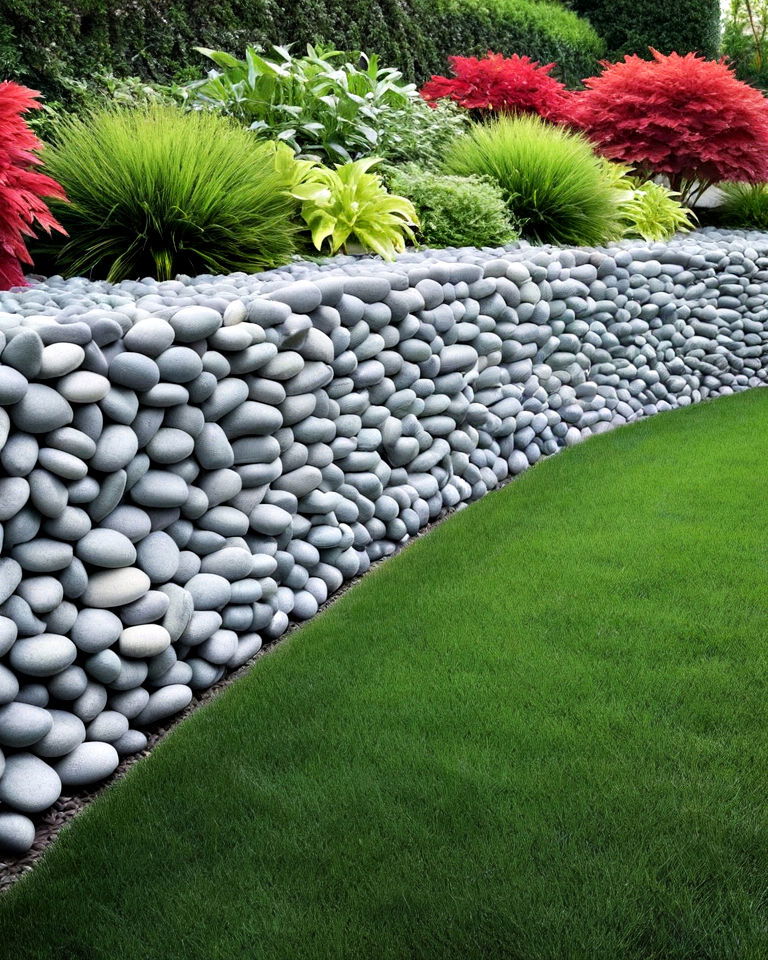
A retaining wall made from rounded pebbles offers a smooth, polished look that's both elegant and unique. Pebbles can be layered with mortar or within gabion cages for stability. This style is perfect for Zen or water-themed gardens, as the pebbles create a calm, balanced aesthetic. Using pebbles in shades of gray, white, or mixed earth tones adds variety and visual interest, creating a harmonious focal point that elevates the overall design.
Conclusion:
Natural rock retaining walls serve as more than just functional structures; they're aesthetic enhancements that add value and harmony to any landscape. Selecting styles like sandstone, moss-covered stone, or fieldstone creates a timeless, grounded look that improves slope stability while fostering biodiversity. Embracing these unique designs invites balance between man-made landscapes and natural beauty, making your outdoor space a destination of rustic elegance and lasting charm.
Key Points:
- Natural Aesthetic: Natural rock retaining walls provide a unique blend of beauty and function, enhancing landscapes with an organic, earthy feel that aligns with outdoor environments.
- Diverse Styles: Options range from rustic, dry-stacked walls to polished pebble or basalt structures, offering versatility to suit different design themes like cottage, modern, or Zen-inspired gardens.
- Functional and Durable: These walls not only add visual appeal but also serve practical purposes, such as stabilizing slopes, preventing soil erosion, and supporting plant growth.
- Customization Potential: Different types of rocks—like limestone, sandstone, and river rocks—enable customization in color, texture, and form, making each wall uniquely suited to its landscape.
- Environmental Harmony: Rock walls promote biodiversity, especially with features like built-in planters or moss-covered surfaces that encourage local flora to thrive.
What to Do Next:
- Identify Your Landscape Needs: Assess your yard's slope, soil type, and design style to determine which rock wall will best fit and serve its purpose.
- Choose a Rock Type: Decide on a rock style (boulders, fieldstone, etc.) based on the aesthetic you want, durability, and how it will integrate with the environment.
- Plan for Installation: Consider whether you'll DIY or hire a professional, as some styles (like boulders or gabion walls) may require specific expertise or equipment.
- Incorporate Plants: Explore plant types suited for your wall's design, especially if you choose a wall with built-in planters or moss-friendly stones for added texture and color.
- Maintain the Wall: Research maintenance tips for the specific stone type you choose to keep your retaining wall functional and visually appealing over time.


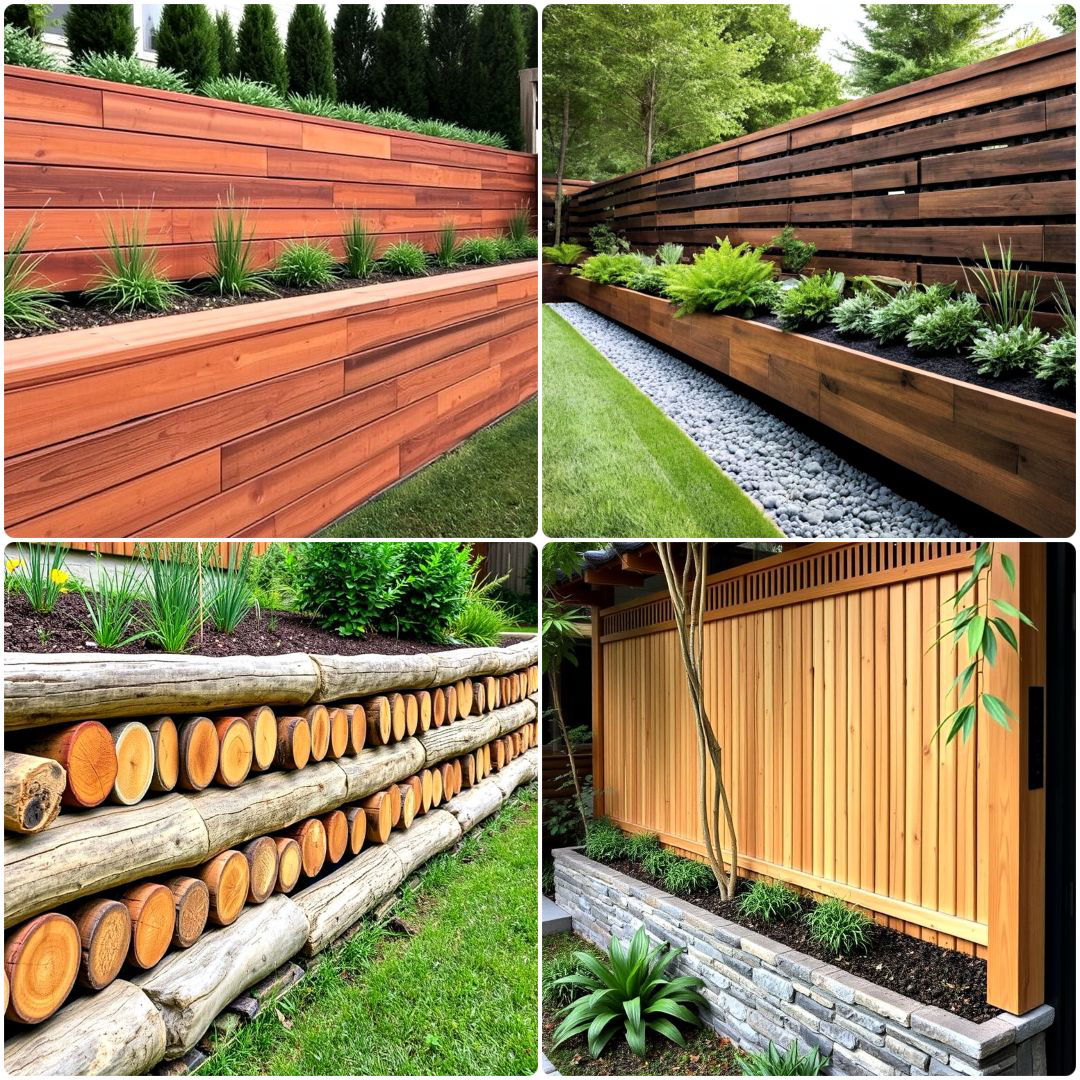

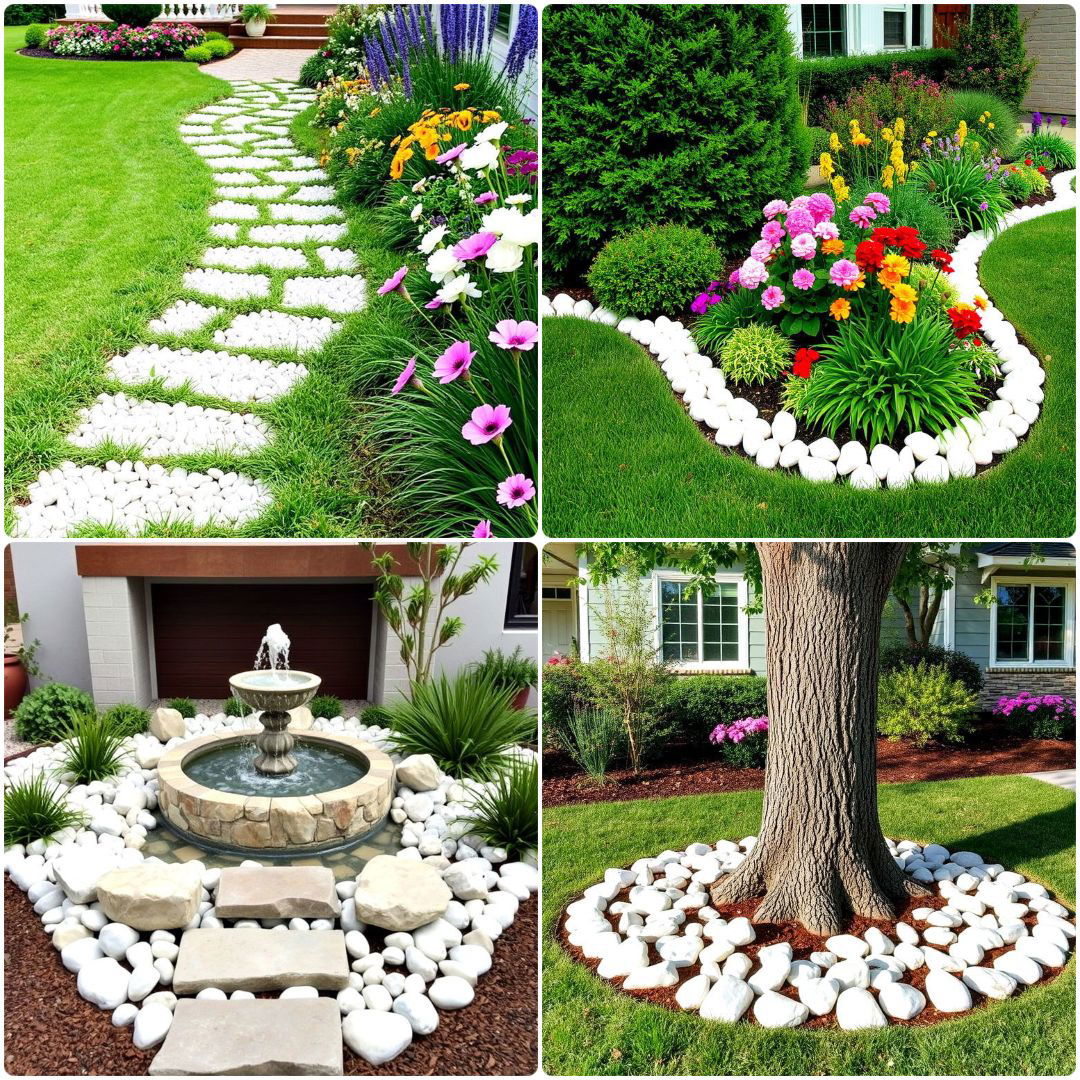
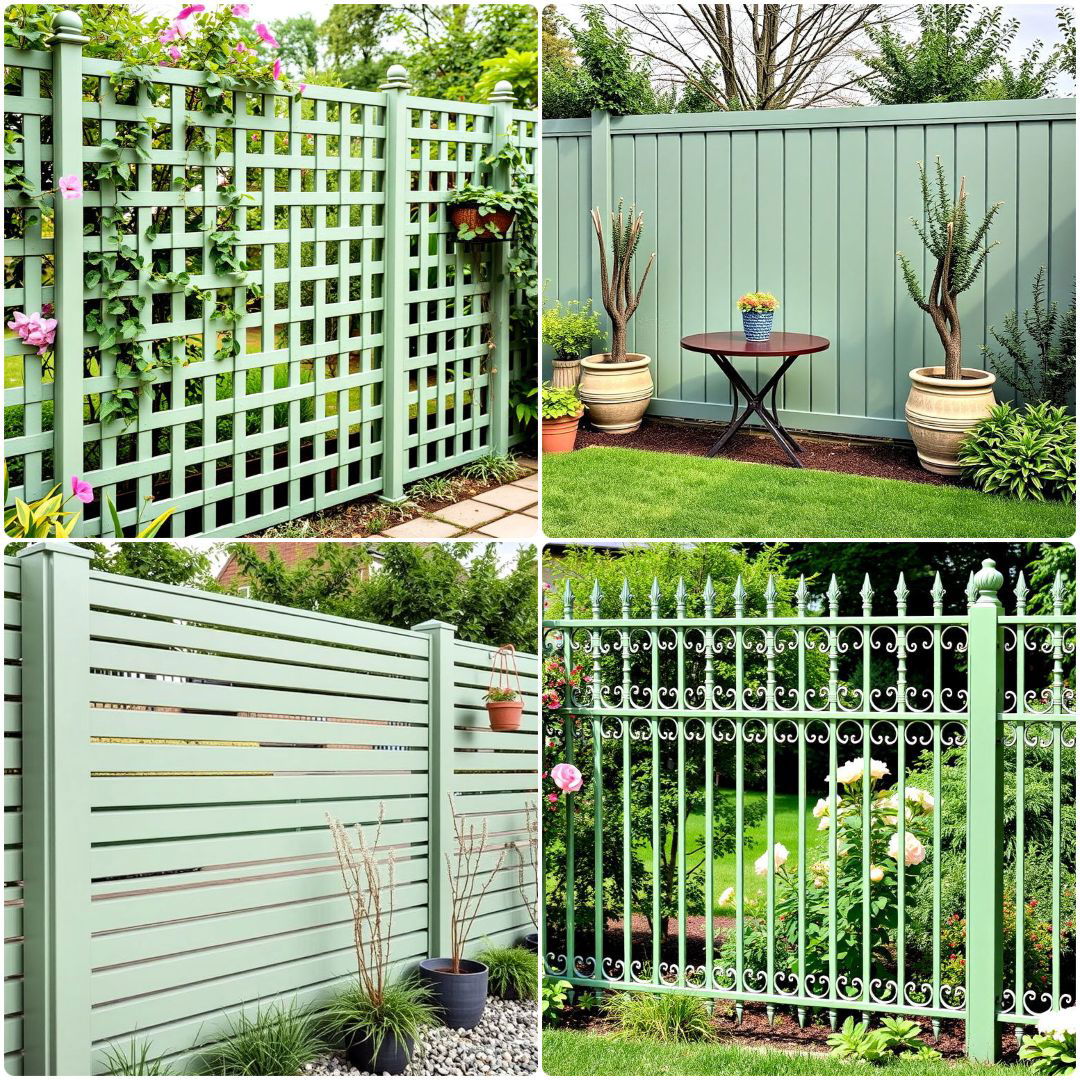
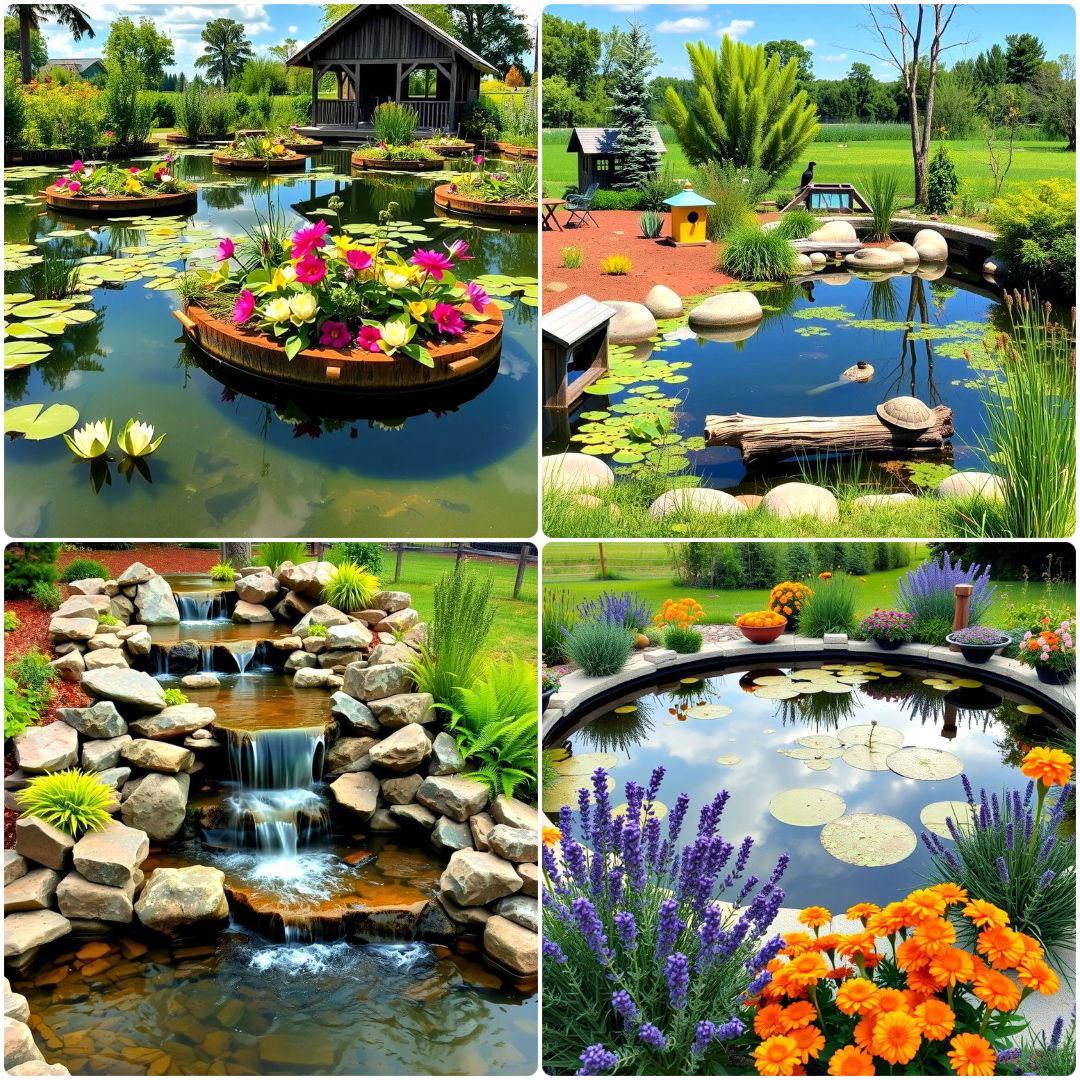
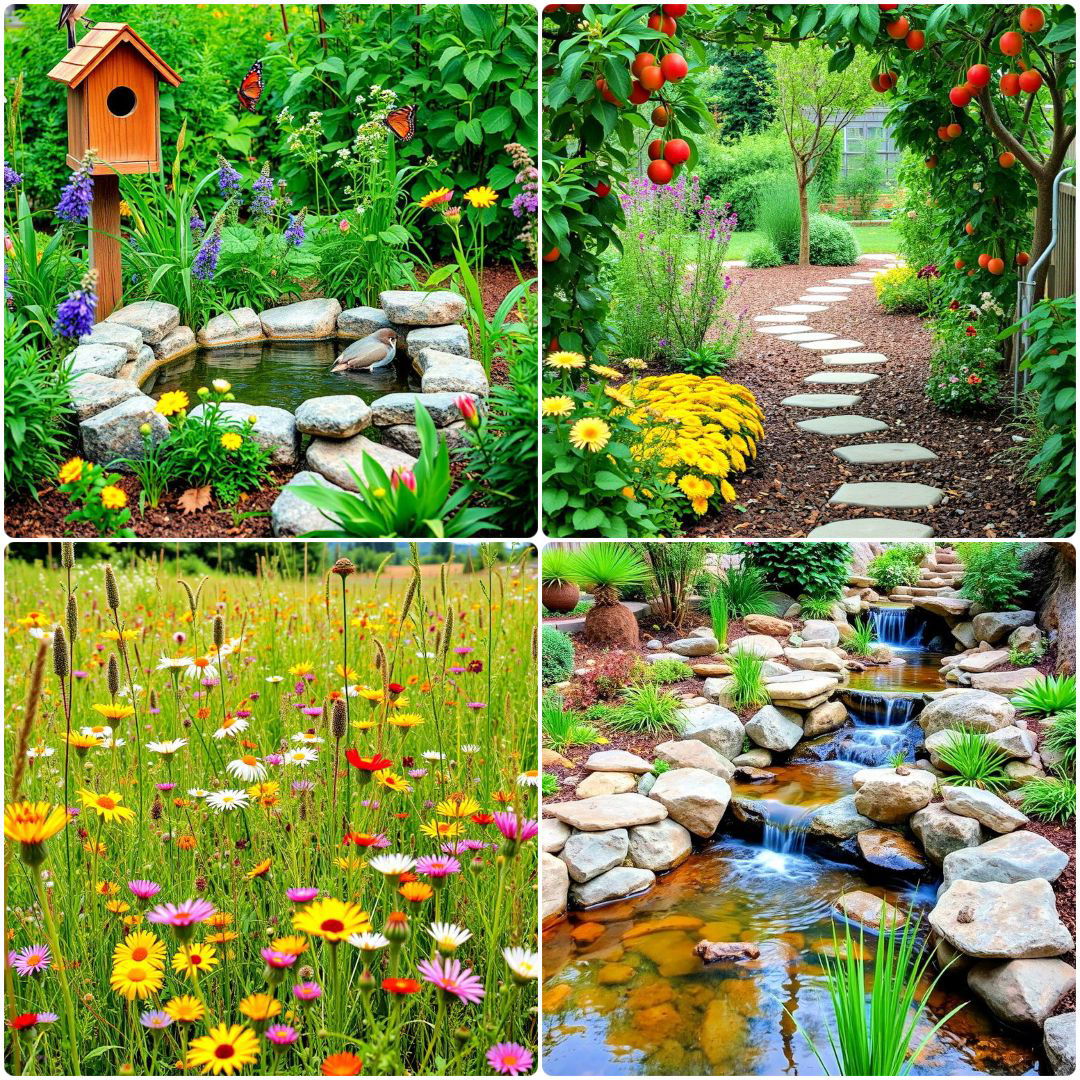
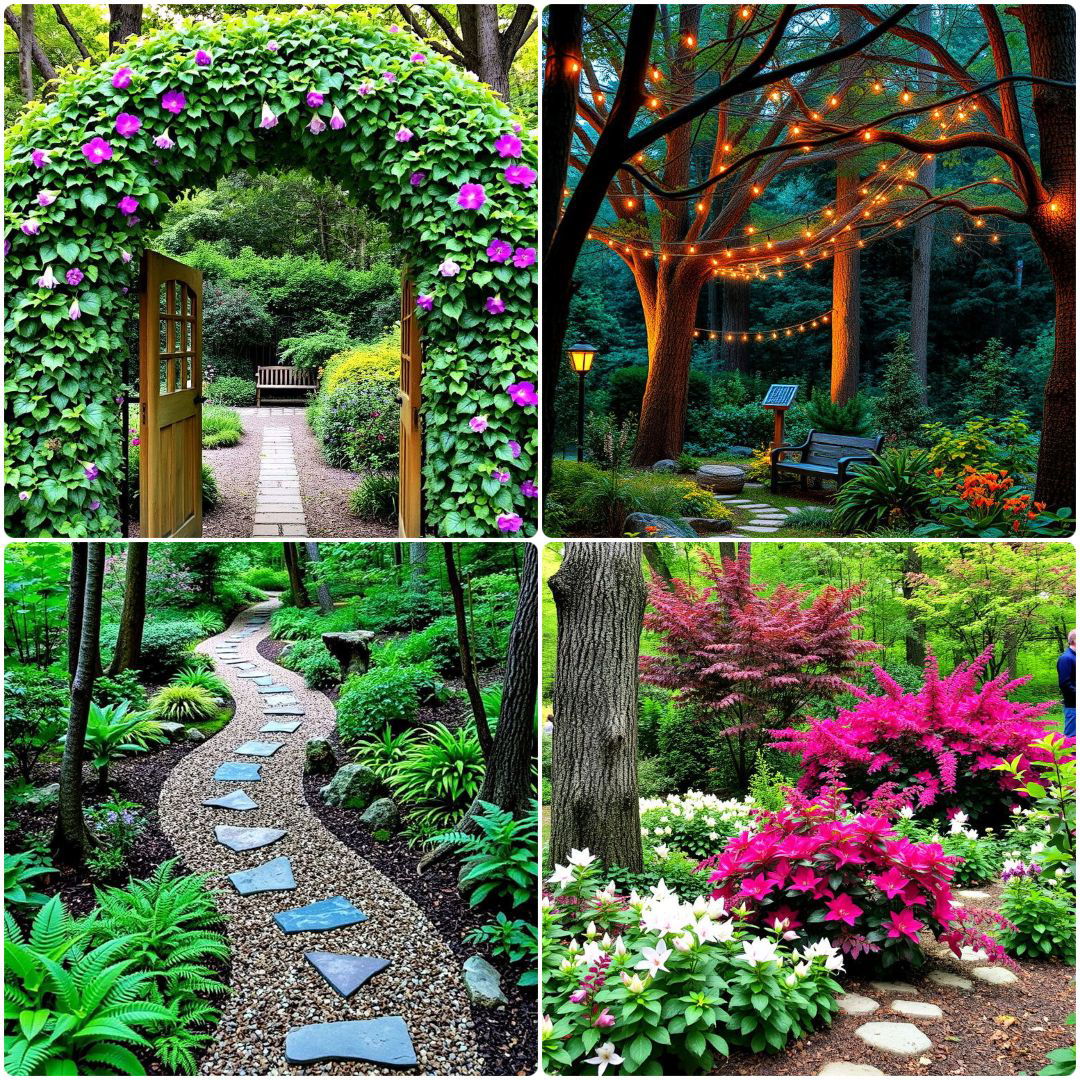

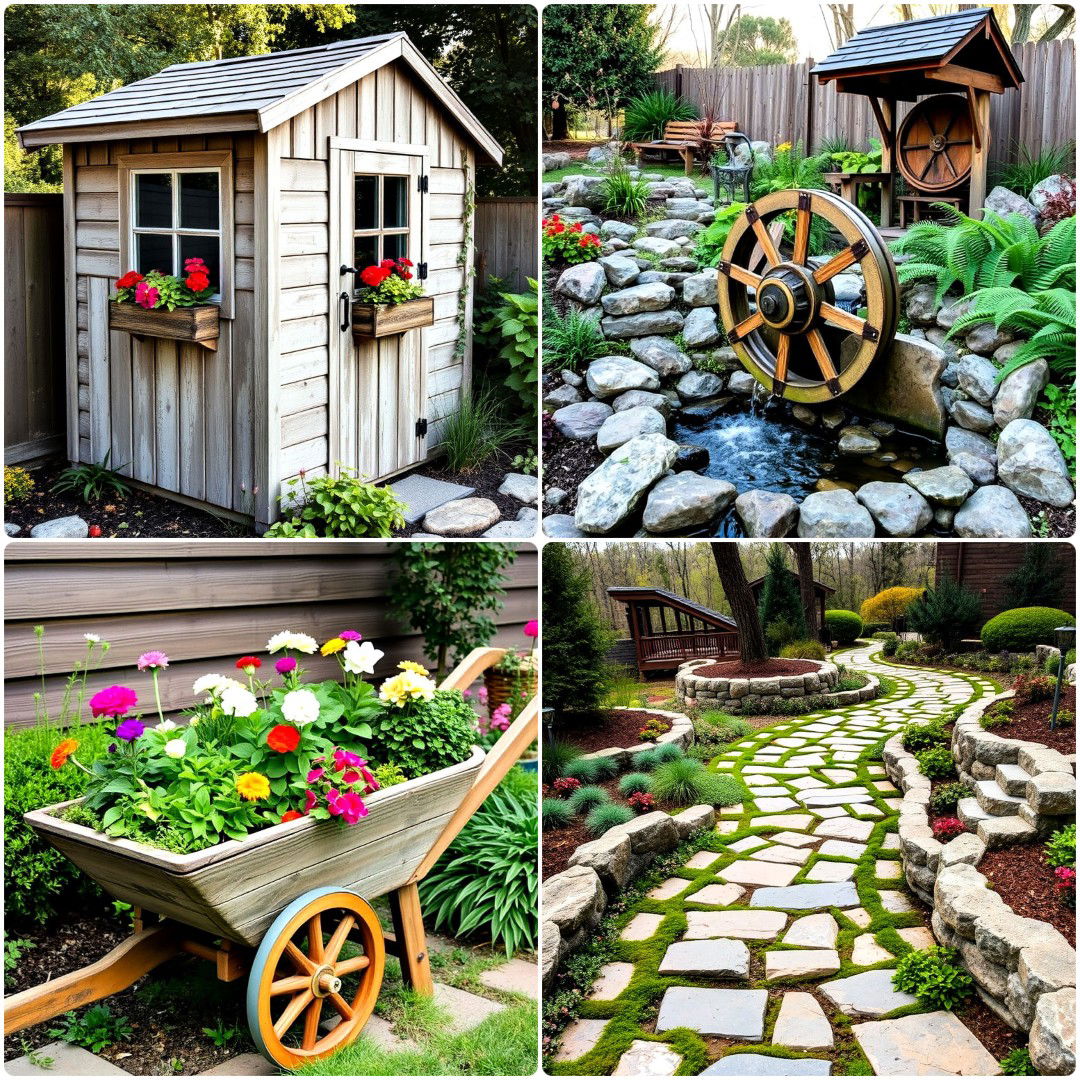

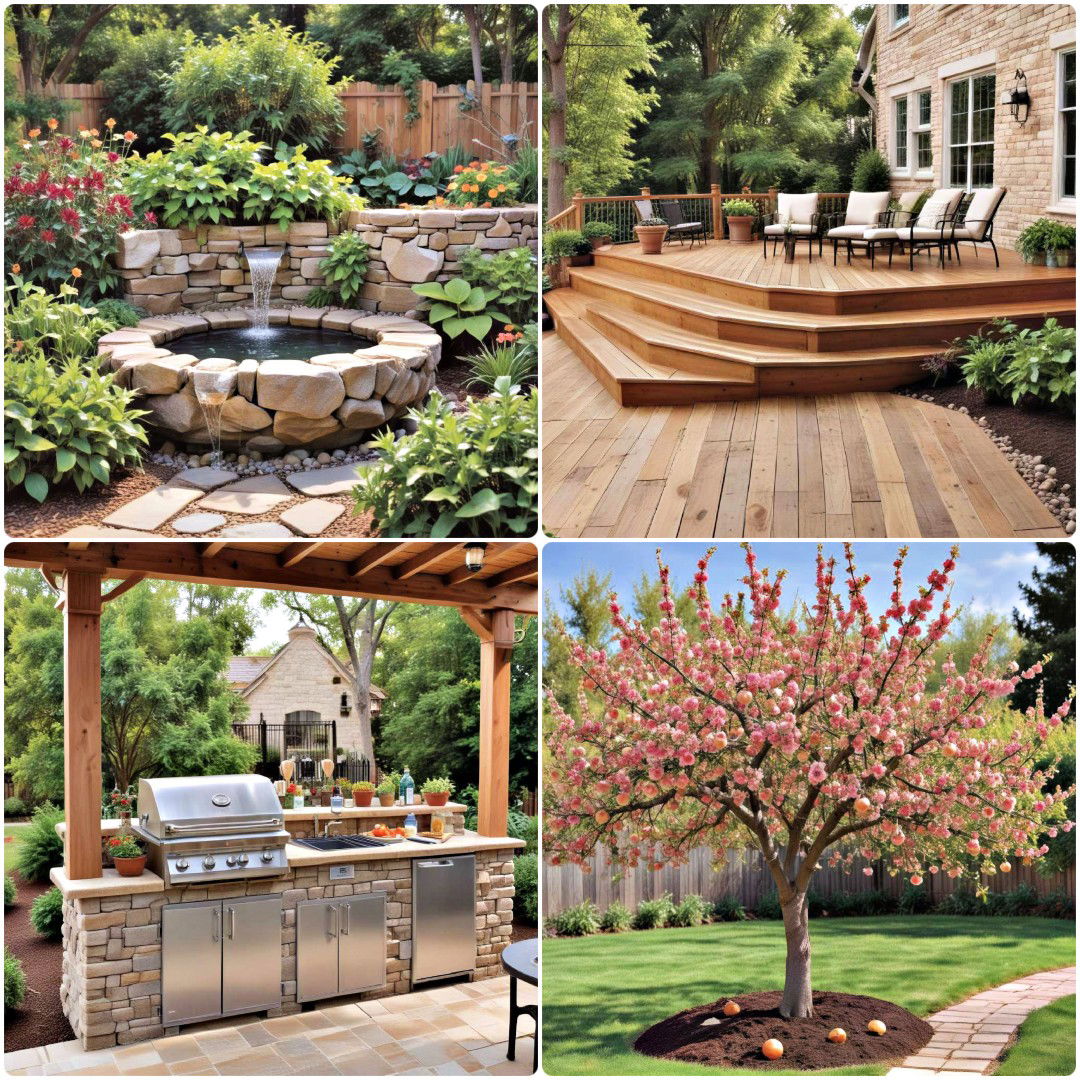
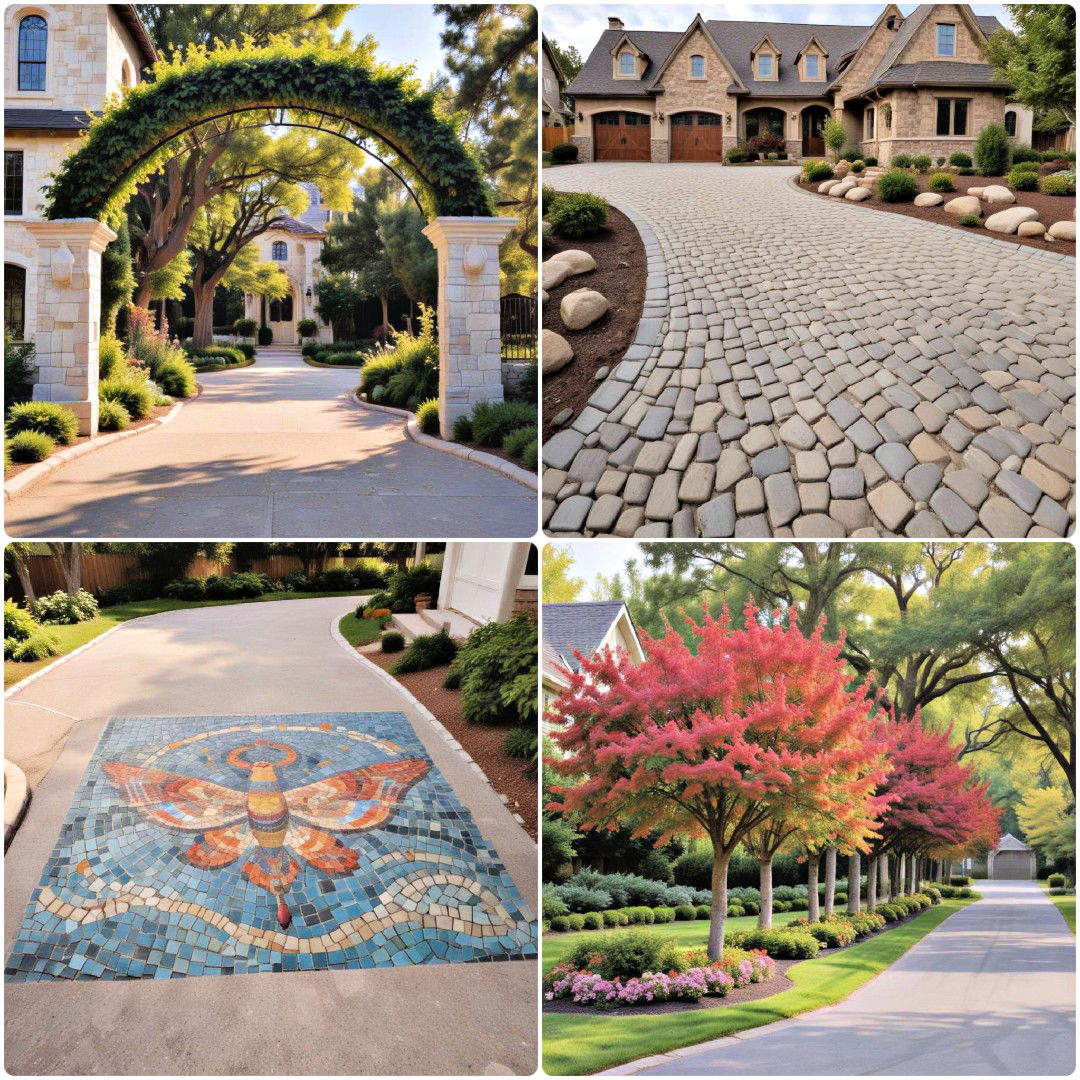
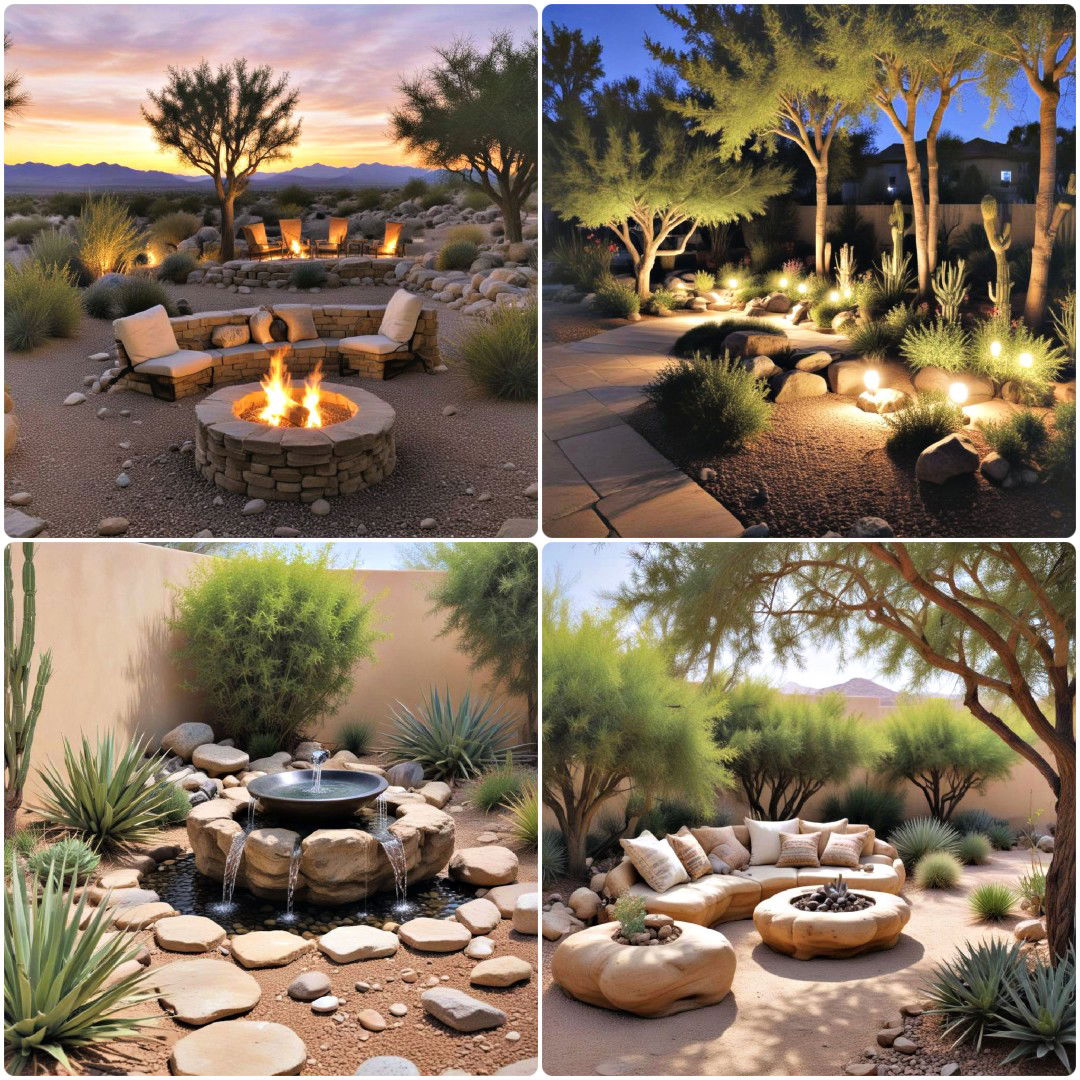
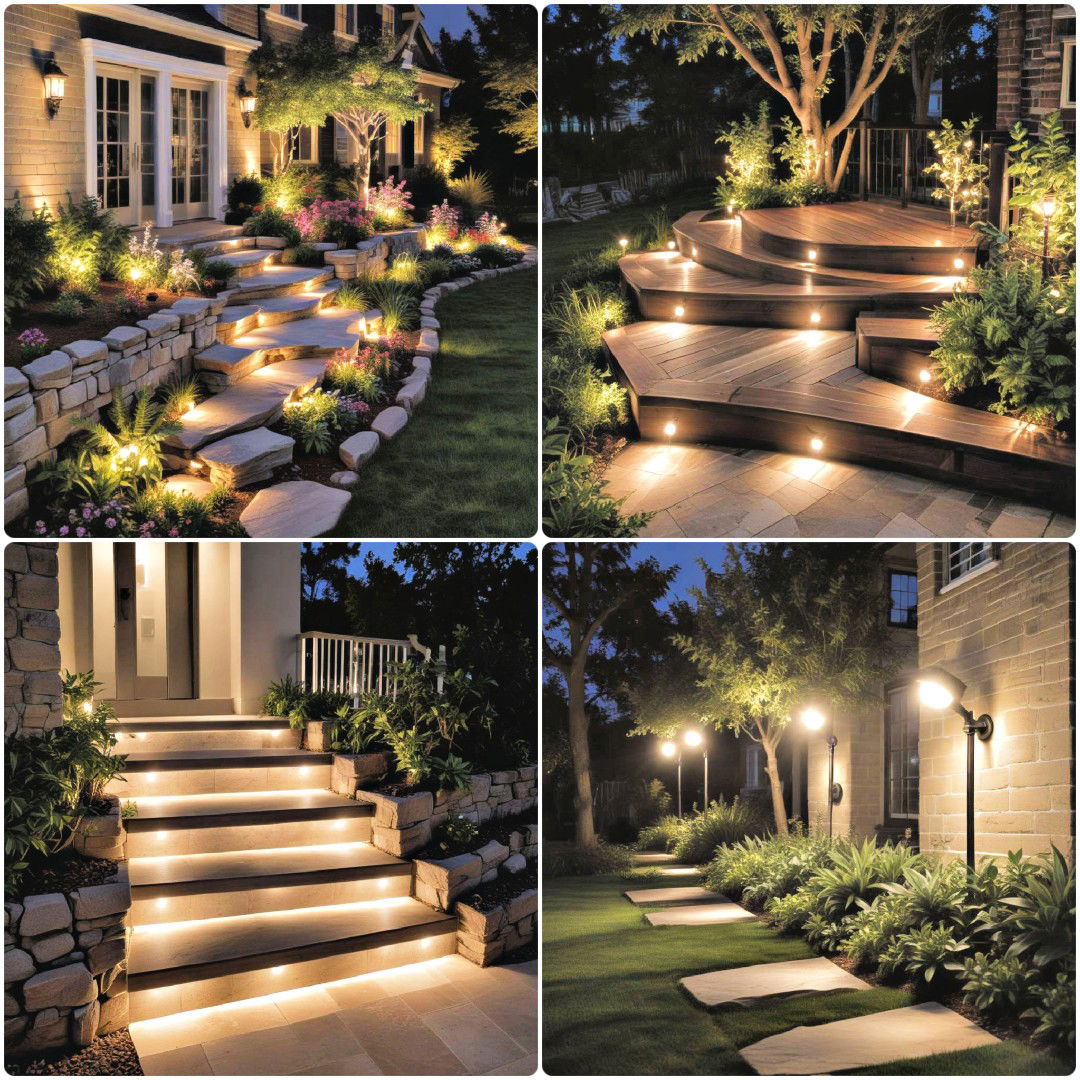
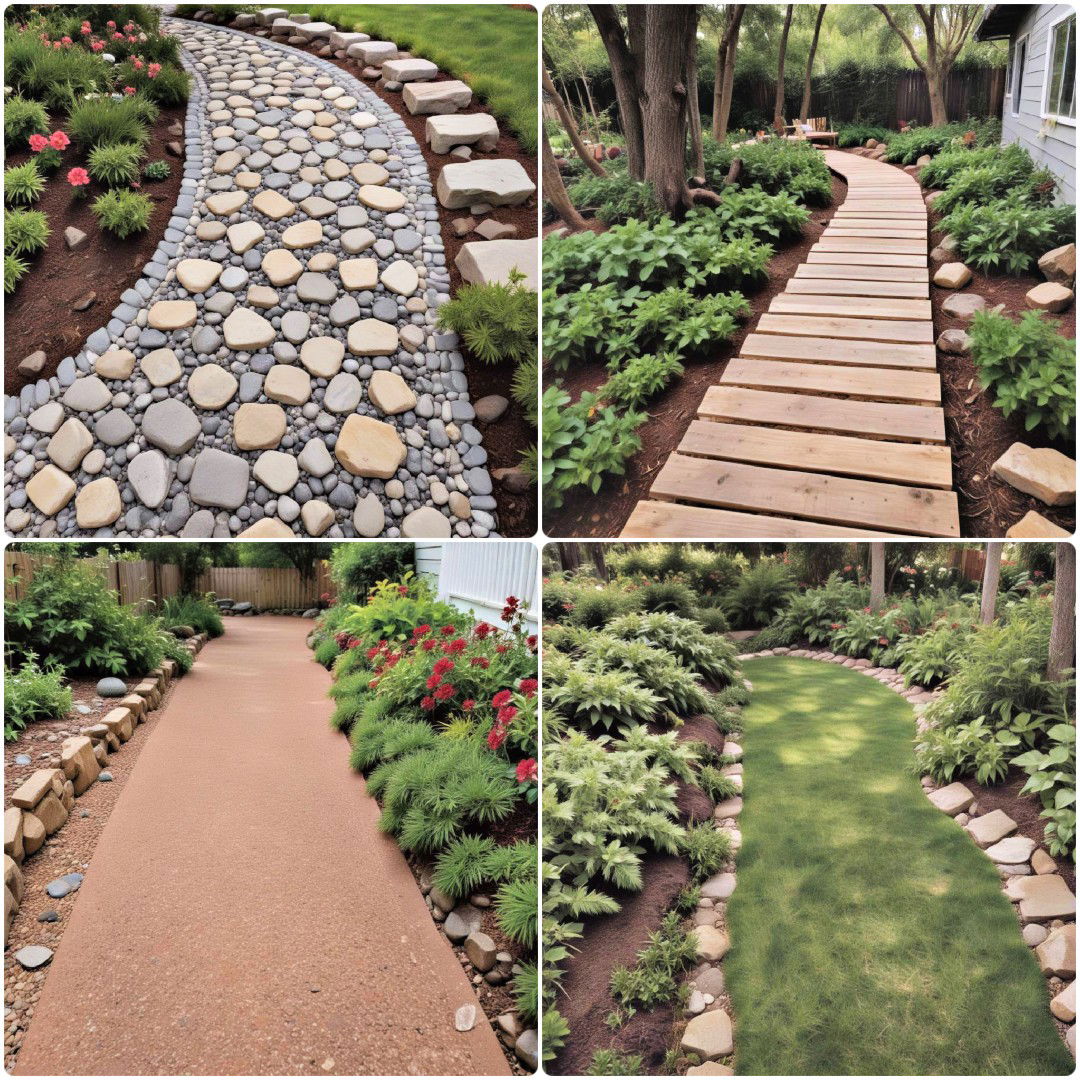
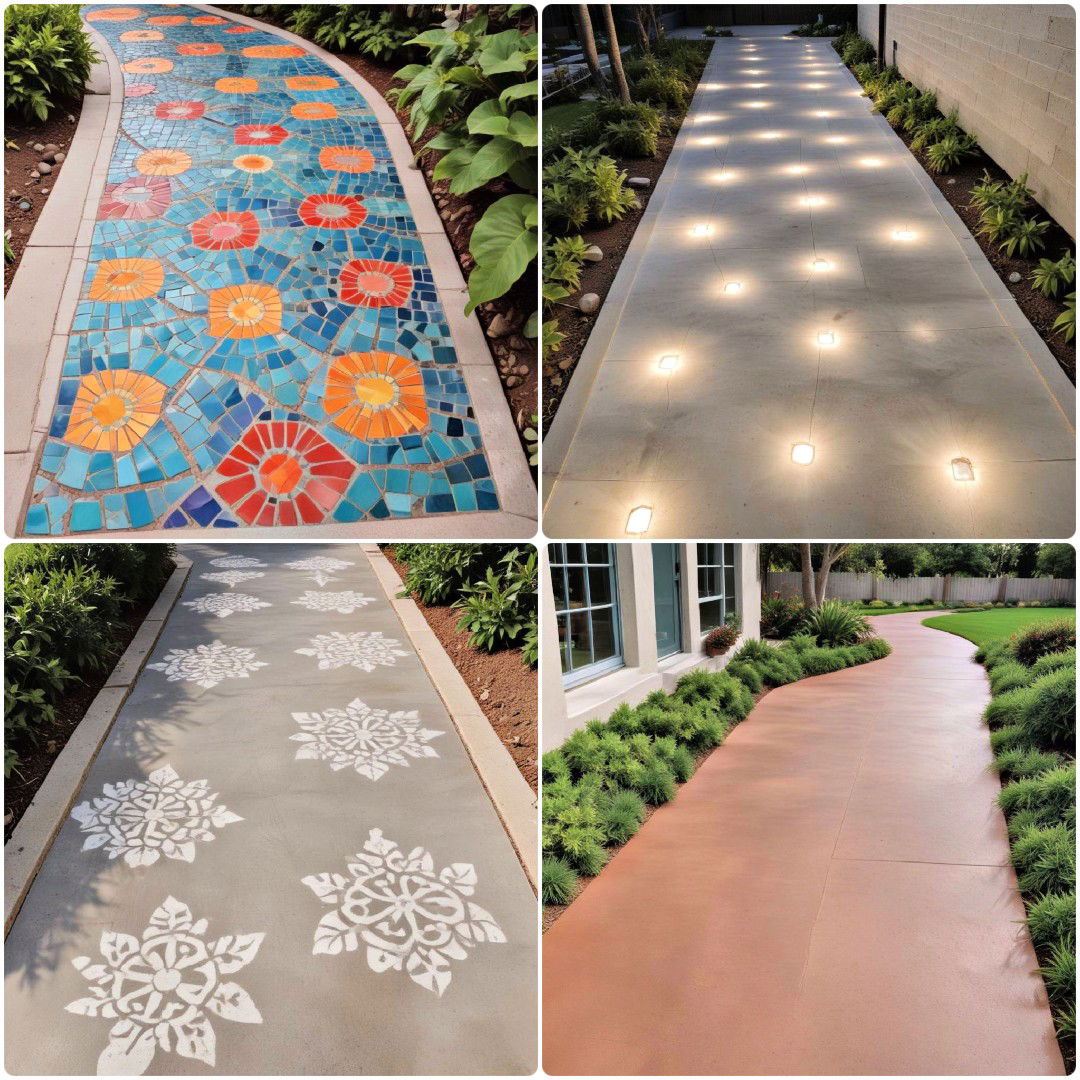
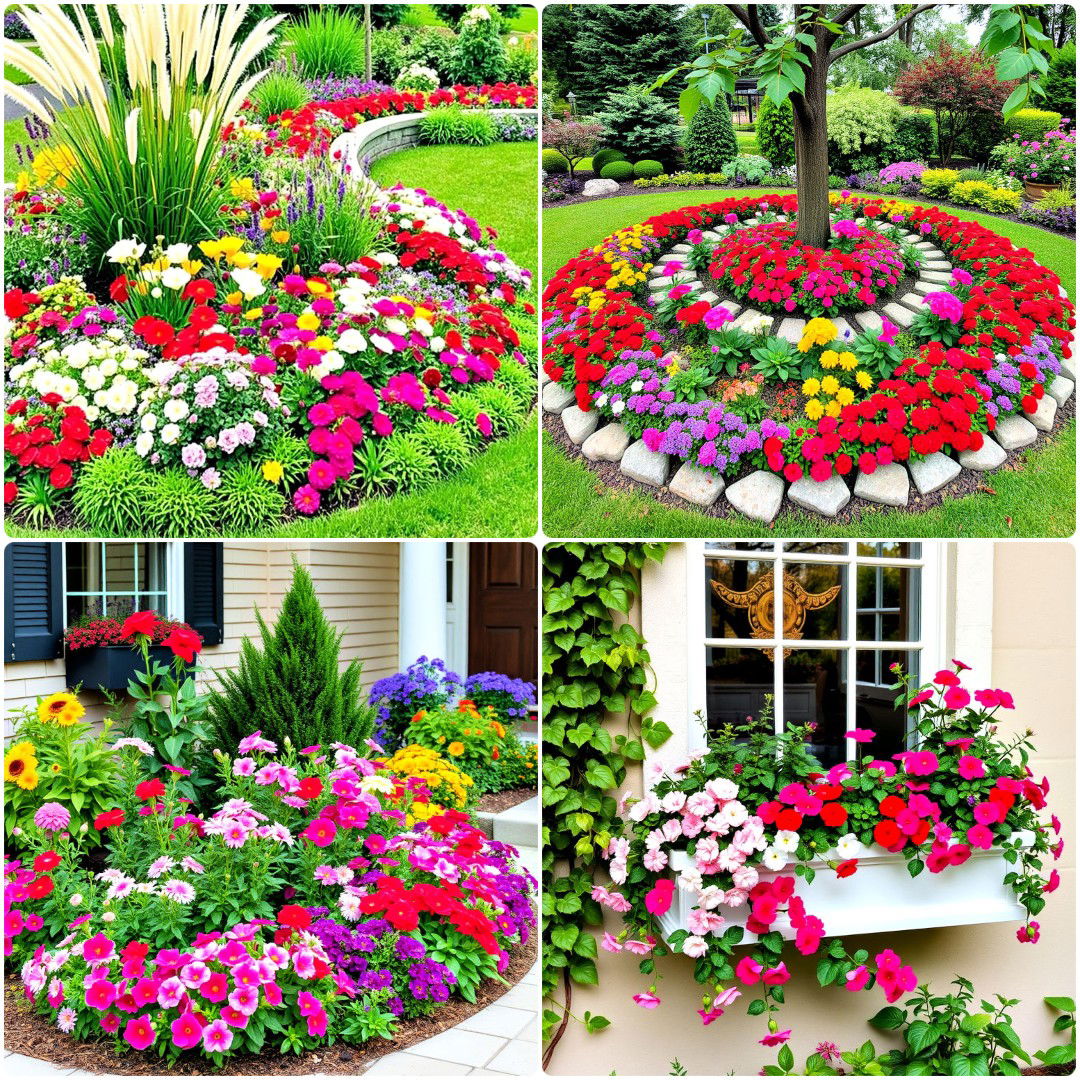
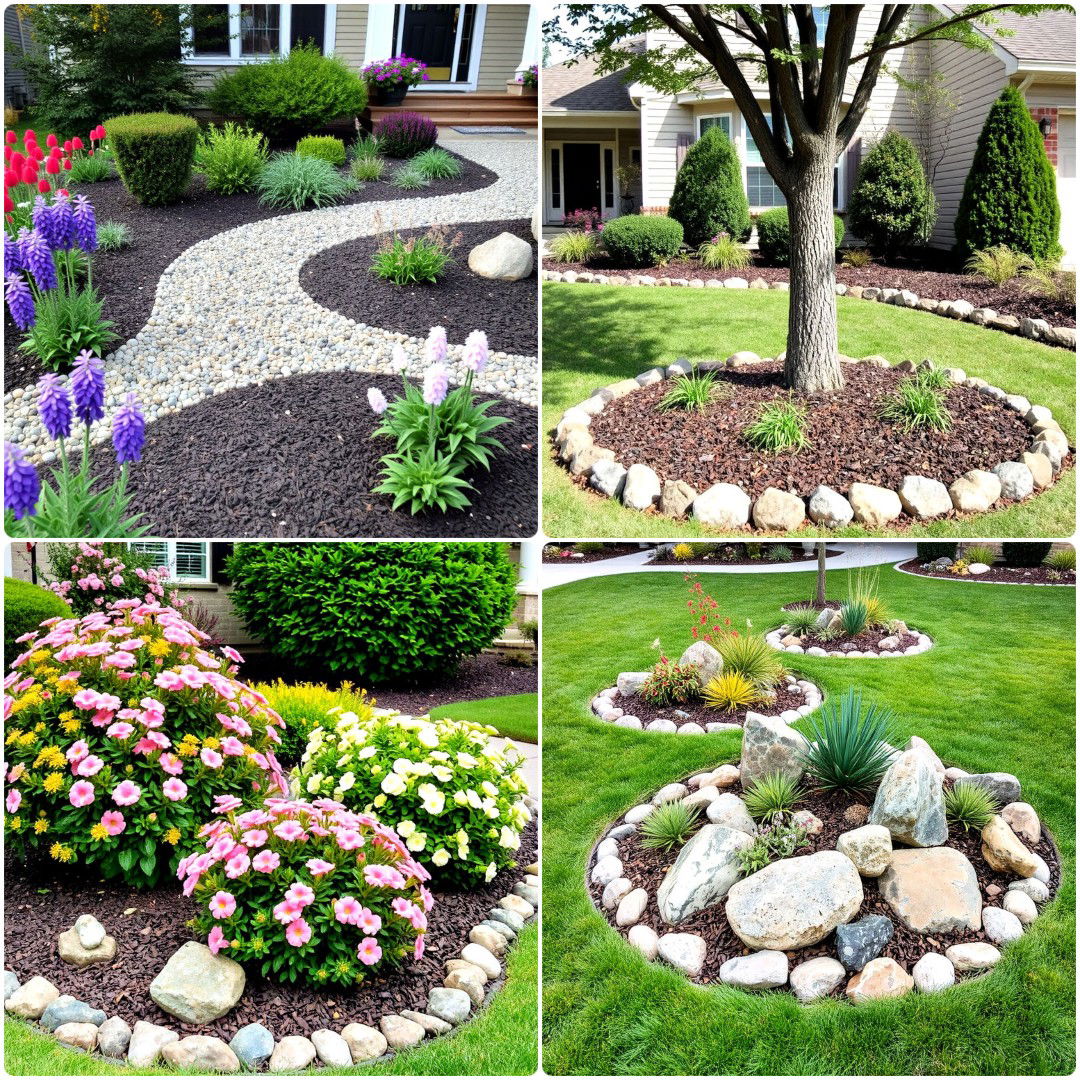
Leave a Reply